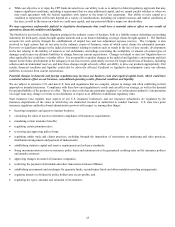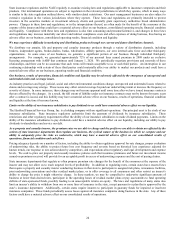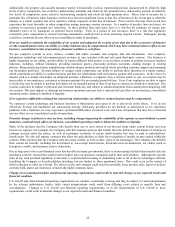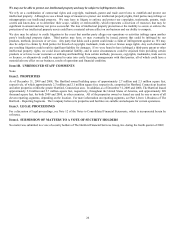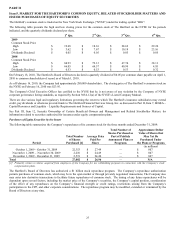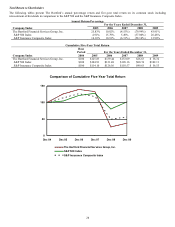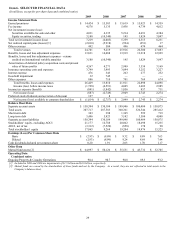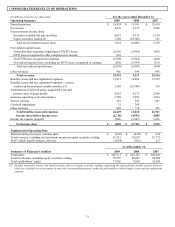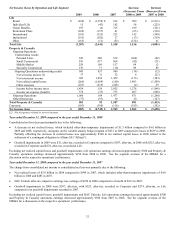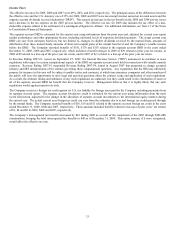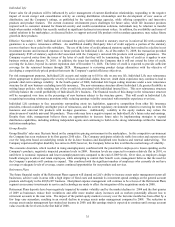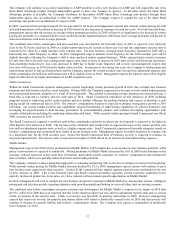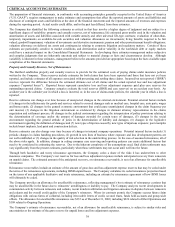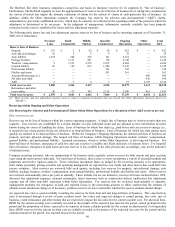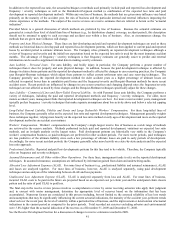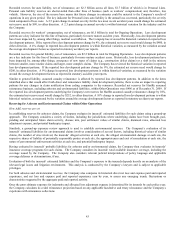The Hartford 2009 Annual Report Download - page 33
Download and view the complete annual report
Please find page 33 of the 2009 The Hartford annual report below. You can navigate through the pages in the report by either clicking on the pages listed below, or by using the keyword search tool below to find specific information within the annual report. 33
Income Taxes
The effective tax rates for 2009, 2008 and 2007 were 49%, 40%, and 26%, respectively. The principal causes of the differences between
the effective rate and the U.S. statutory rate of 35% for 2009, 2008 and 2007 were tax-exempt interest earned on invested assets and the
separate account dividends received deduction (“DRD”). This caused an increase in the tax benefit on the 2009 and 2008 pre-tax losses
and a decrease in the tax expense on the 2007 pre-tax income. The effective tax rate for 2009 also includes the tax effect of a non-
deductible expense related to the settlement of a contingent obligation to Allianz. For additional information, see Note 13 of the Notes
to Consolidated Financial Statements.
The separate account DRD is estimated for the current year using information from the prior year-end, adjusted for current year equity
market performance and other appropriate factors, including estimated levels of corporate dividend payments. The actual current year
DRD can vary from estimates based on, but not limited to, changes in eligible dividends received by the mutual funds, amounts of
distribution from these mutual funds, amounts of short-term capital gains at the mutual fund level and the Company’ s taxable income
before the DRD. The Company recorded benefits of $181, $176 and $155 related to the separate account DRD in the years ended
December 31, 2009, 2008 and 2007, respectively, which included a benefit (charge) in 2009 of $29 related to prior year tax returns, in
2008 of $9 related to a true-up of the prior year tax return, and in 2007 of $(1) related to a true-up of the prior year tax return.
In Revenue Ruling 2007-61, issued on September 25, 2007, the Internal Revenue Service (“IRS”) announced its intention to issue
regulations with respect to certain computational aspects of the DRD on separate account assets held in connection with variable annuity
contracts. Revenue Ruling 2007-61 suspended Revenue Ruling 2007-54, issued in August 2007 that purported to change accepted
industry and IRS interpretations of the statutes governing these computational questions. Any regulations that the IRS may ultimately
propose for issuance in this area will be subject to public notice and comment, at which time insurance companies and other members of
the public will have the opportunity to raise legal and practical questions about the content, scope and application of such regulations.
As a result, the ultimate timing and substance of any such regulations are unknown, but they could result in the elimination of some or
all of the separate account DRD tax benefit that the Company receives. Management believes that it is highly likely that any such
regulations would apply prospectively only.
The Company receives a foreign tax credit against its U.S. tax liability for foreign taxes paid by the Company including payments from
its separate account assets. The separate account foreign tax credit is estimated for the current year using information from the most
recent filed return, adjusted for the change in the allocation of separate account investments to the international equity markets during
the current year. The actual current year foreign tax credit can vary from the estimates due to actual foreign tax credits passed through
by the mutual funds. The Company recorded benefits of $16, $16 and $11 related to the separate account foreign tax credit in the years
ended December 31, 2009, 2008 and 2007, respectively. These amounts included benefits related to true-ups of prior years’ tax returns
of $3, $4 and $0 in 2009, 2008 and 2007, respectively.
The Company’ s unrecognized tax benefits decreased by $43 during 2009 as a result of the completion of the 2002 through 2006 IRS
examinations, bringing the total unrecognized tax benefits to $48 as of December 31, 2009. This entire amount, if it were recognized,
would affect the effective tax rate.


